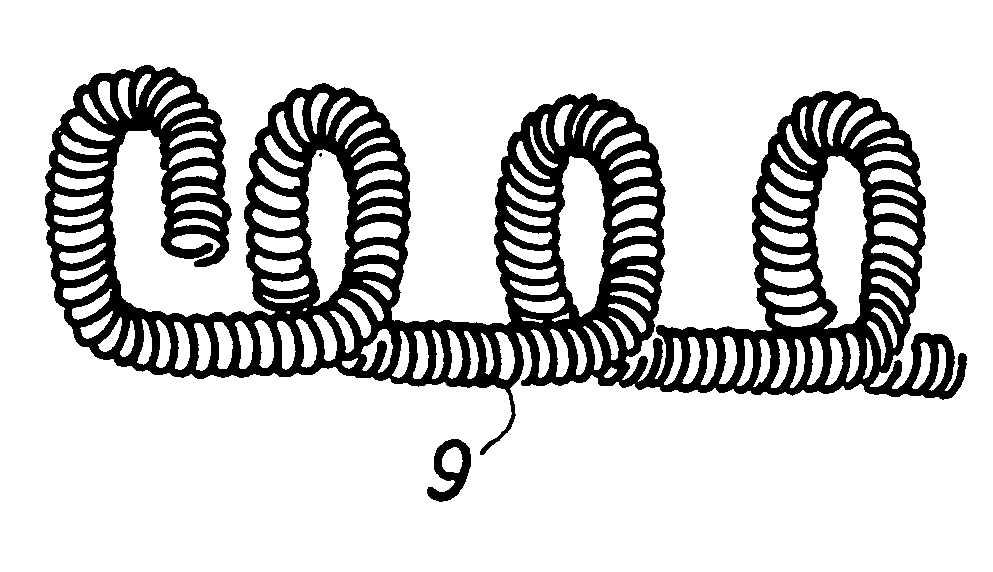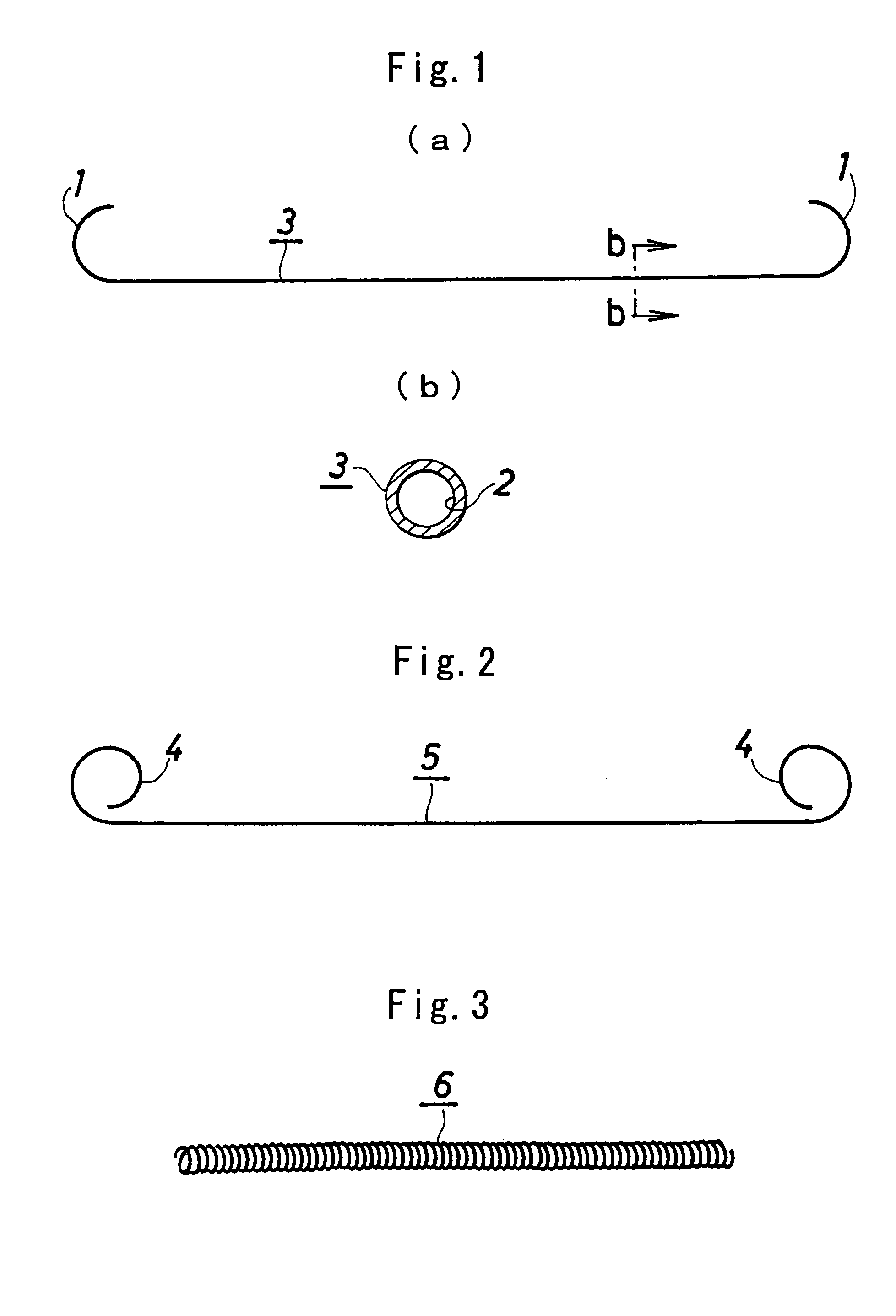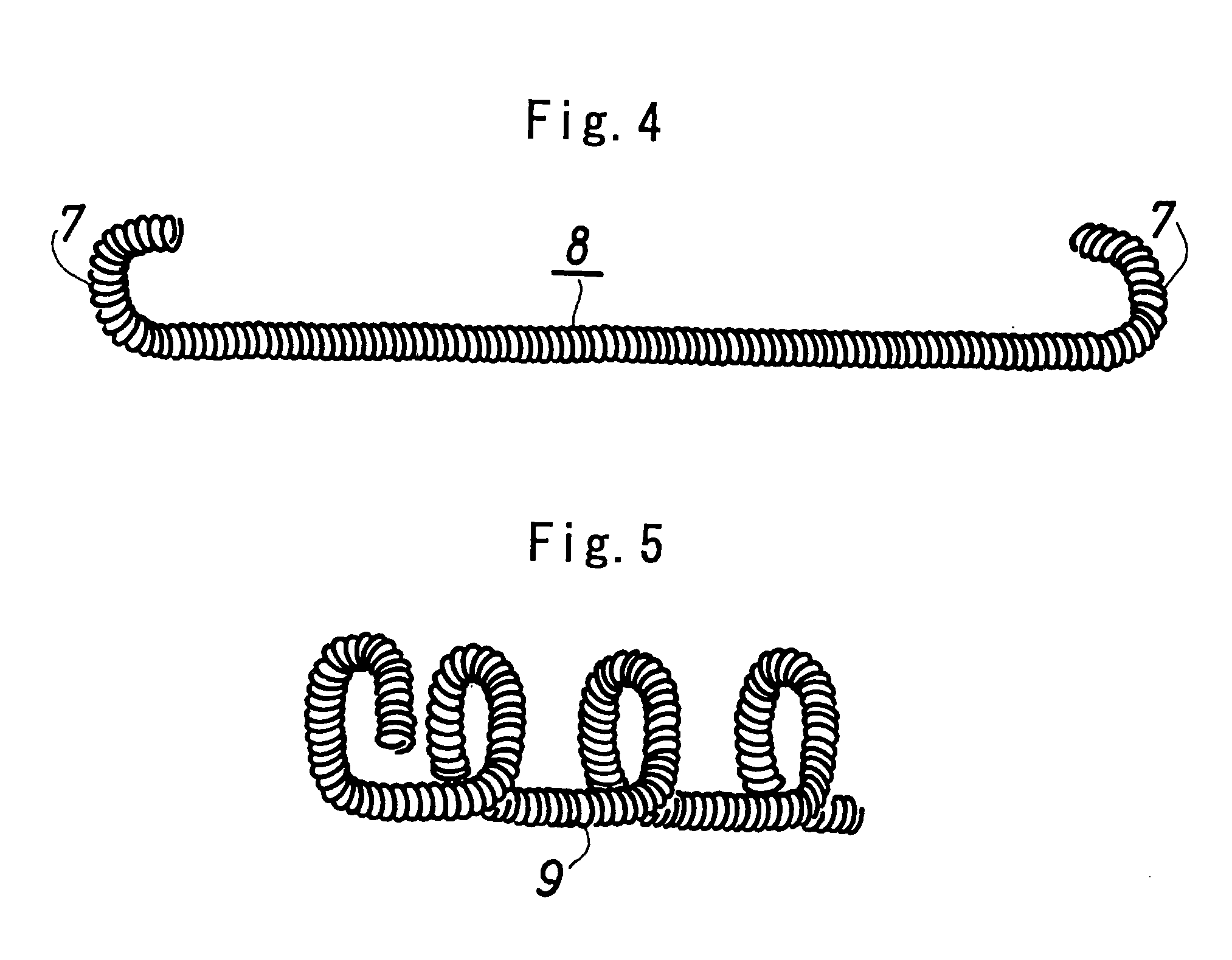Bioabsorbable vasoocclusive coil
a vasoocclusive coil and bioabsorbable technology, applied in the field of coils, can solve the problems of raising difficulties in surgical excision, difficult diagnosis,
- Summary
- Abstract
- Description
- Claims
- Application Information
AI Technical Summary
Benefits of technology
Problems solved by technology
Method used
Image
Examples
example 1
[0039] Poly(L-lactic acid) (product of Shimadzu Corp., trade name “Lacty,” 200,000 in weight average molecular weight, 175° C. in melting point) was melt-spun at 200° C. and drawn to obtain a hollow monofilament 0.15 mm in outside diameter and 0.12 mm in inside diameter. The monofilament was cut to a length of 8 cm. Each of opposite ends of the cut piece was wound around a stainless steel mandrel, 1 mm in diameter, one-half turn, held in J-shaped curl, heat-treated at 150° C. and then cooled. In this way, a bioabsorbable vasoocclusive coil 3 was prepared which had a J-shaped curved portion 1 at each of opposite ends thereof and a hollow portion 2 over the entire length thereof as shown in FIG. 1.
example 2
[0040] The hollow monofilament of poly (L-lactic acid) produced in Example 1 and having an outside diameter of 0.15 mm and an inside diameter of 0.12 mm was cut to a length of 60 cm. Each of opposite ends of the cut piece was wound around a stainless steel mandrel, 1 mm in diameter, one turn, held in the form of a circular loop, heat-treated at 150° C. and then cooled. In this way, a bioabsorbable hollow vasoocclusive coil 5 was prepared which had a circular loop portion 4 at each of opposite ends thereof as shown in FIG. 2.
[0041] The vasoocclusive coil was inserted as stretched substantially straight into the base end of a microcatheter measuring 1 mm in outside diameter and 110 cm in entire length and filled with physiological saline, and advanced to the catheter distal end, from which the coil was pushed out of the catheter. The coil thereafter restored itself to the shape of circular loop at each end thereof.
example 3
[0042] The hollow monofilament of poly(L-lactic acid) produced in Example 1 and having an outside diameter of 0.15 mm and an inside diameter of 0.12 mm was cut to a length of 60 cm. The cut piece was helically wound around a straight stainless steel mandrel, 2 mm in diameter, heat-treated at 150° C. and then cooled. The winding was thereafter removed from the mandrel. In this way, a bioabsorbable hollow vasoocclusive coil 6 was prepared which was about 5 cm in length and in the form of a helical winding as shown in FIG. 3.
PUM
| Property | Measurement | Unit |
|---|---|---|
| diameter | aaaaa | aaaaa |
| diameter | aaaaa | aaaaa |
| diameter | aaaaa | aaaaa |
Abstract
Description
Claims
Application Information
 Login to View More
Login to View More - R&D
- Intellectual Property
- Life Sciences
- Materials
- Tech Scout
- Unparalleled Data Quality
- Higher Quality Content
- 60% Fewer Hallucinations
Browse by: Latest US Patents, China's latest patents, Technical Efficacy Thesaurus, Application Domain, Technology Topic, Popular Technical Reports.
© 2025 PatSnap. All rights reserved.Legal|Privacy policy|Modern Slavery Act Transparency Statement|Sitemap|About US| Contact US: help@patsnap.com



